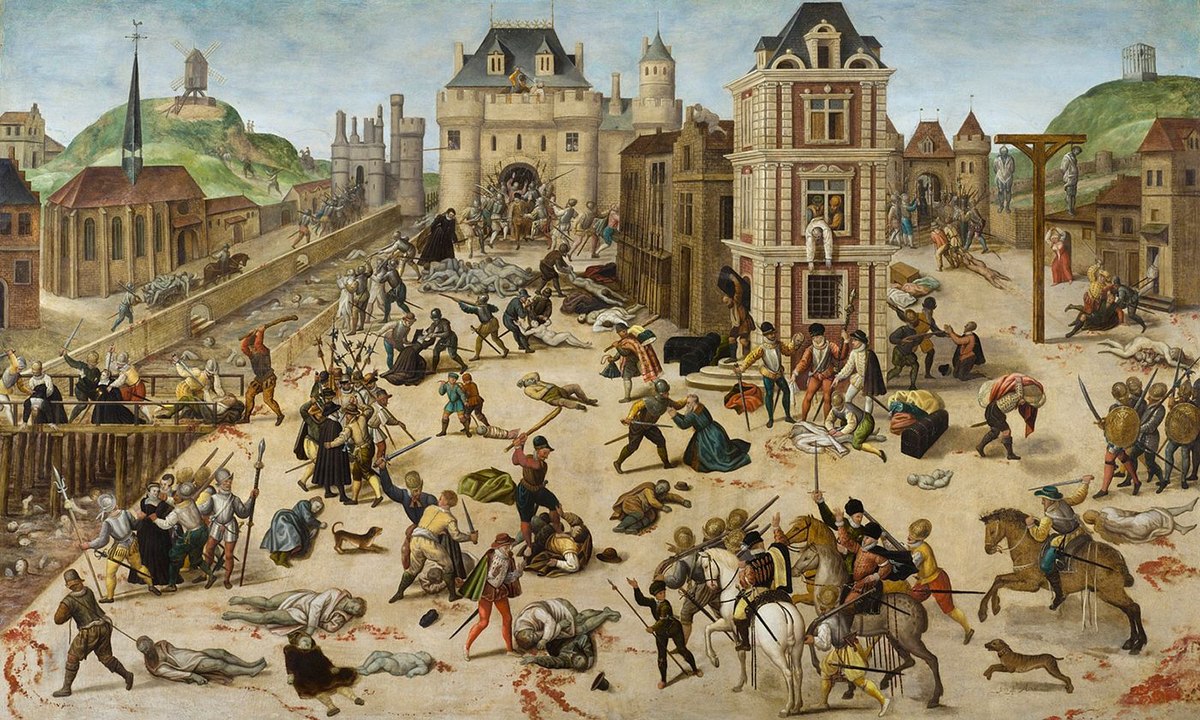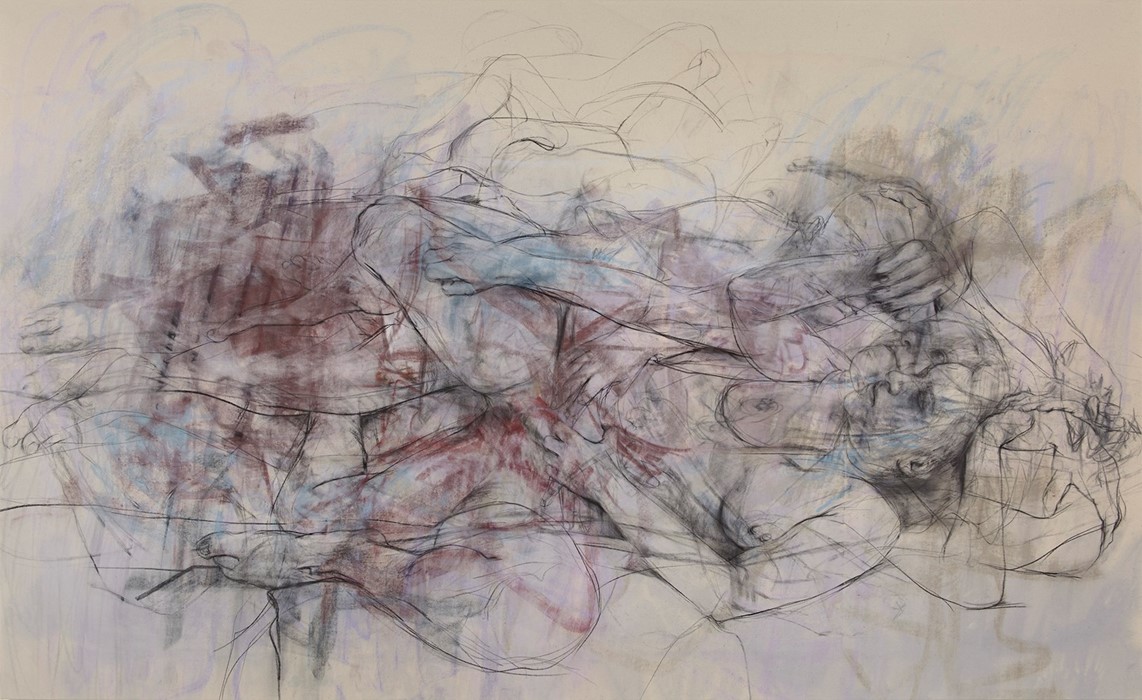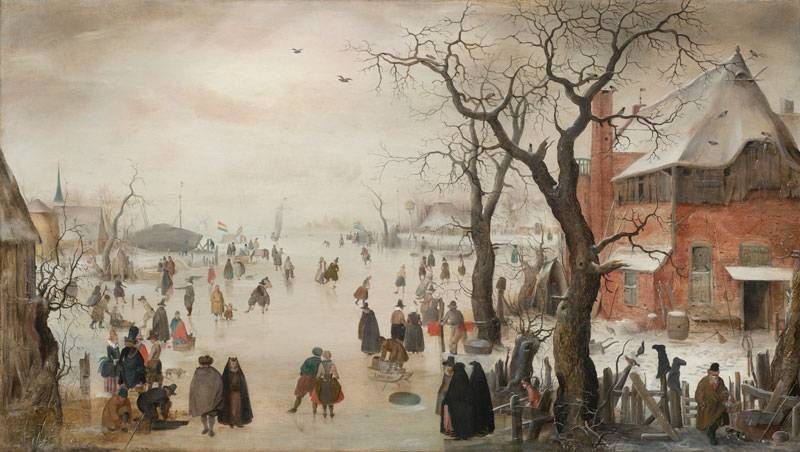Among the most affecting and disconcerting moments in Can’t Get You Out of My Head, the British filmmaker Adam Curtis’s six-part ‘emotional history of the modern world’, is the tale of Abu Zubaydah, the Palestinian national and alleged al-Qaeda operative who has been detained without charge and tortured by US authorities for almost two decades. We first encounter Zubaydah in the context of the Afghan Civil War as he tries to recover from a shrapnel wound to the brain, and the ensuing fragmentation of his consciousness, by writing a diary. This ‘vast collage of memories and feelings’ (amounting to some 10,000 pages) is a testament to a splintering of experience and the emergence of multiple personalities. Doubts about the path taken by the Mujahideen mingle with reminiscences of youth – the jihadist’s unlikely passion for Chris de Burgh is mined by Curtis as he plays the saccharine hit ‘Lady in Red’ over footage of Afghanistan.
Zubaydah is not just playing a bit part in Curtis’s latest survey of the making of our dejected present, he is also something like an allegorical figure conscripted to embody a collective condition, as well as refract Curtis’s own practice of archival storytelling. As the director observes in his voiceover, ‘there was no story that made sense’ to Zubaydah anymore, ‘he was trapped in a perpetual now, haunted by fragments of memory, with no way of moving into the future’. At his bleakest and most intransigent, this is not just what Curtis says, it is what he does, in the thousands of cuts and samples that make up this Gesamtkunstwerk of the archival film-essay, which replays and remixes sundry leitmotivs from the over three decades of work he has produced for the BBC. The wash of melancholy that accompanies distant footage of Zubaydah being led to and from his cage at Guantanamo, as Curtis intones ‘his fragmented memories are now starting to fade’, crystallizes the claims that Curtis has long been making for ‘our’ politically disoriented and perceptually destabilized condition. (The ‘we’ – generically standing in for inhabitants of depoliticized parliamentary capitalist states – is as ubiquitous here as ‘the elites’, ‘the politicians’, ‘the old system of power’ or ‘the bankers’, along with ‘the scientists’, ‘the white radicals’, ‘the revolutionaries’, etc.)
Born in 1955 to a family with both a political and artistic orientation – his socialist father was a cameraman for the documentarian Humphrey Jennings – Curtis abandoned a PhD at Oxford (about ‘how politics got taken over by economics’, he has said) in his mid-20s for the BBC. Initially a researcher for daytime television, he has since the early 1990s made political documentaries of growing ambition. This latest series marks something of a departure, or at least a heightening of recent tendencies. While the works that made his name traced the unintended consequences of world-changing ideas launched by particular individuals or groups – following the symptomatic career of James Goldsmith from asset-stripping tycoon to nationalist critic of globalized capitalism in The Mayfair Set (1999), the arc from psychoanalysis to the focus group through Freud and his nephew Edward Bernays in The Century of the Self (2002), or the political entanglements of neo-Darwinism in All Watched Over by Machines of Loving Grace (2011) – the multifarious protagonists of Can’t Get You Out of My Head are there more for the emblematic significance of their experiences than for their actual impress on events. This is even so for Mao’s wife Jiang Qing, whose counterintuitive figuration as the harbinger of a new individualism allows Curtis to delve into her early cinema career (and the virulent jealousies it seeded), as well as her promotion of the new revolutionary opera, but leaves the complex canvas of the Cultural Revolution painted in a predictable light (Mao’s power-grab, popular frenzy, and so on).
Thankfully, Curtis’s feel for the archive often overwhelms the representative tasks he has enlisted these individual stories for. The more he conveys a situated sense of their individuality – of the transgender activist Julia Grant’s struggles with a callous medical establishment, of countercultural prankster Kerry Thornley’s entrapment in his own conspiratorial fabulations, of black nationalist and enforcer Michael de Freitas and slumlord Peter Rachman as products and agents of a historical violence mainstream England wished to blot out – the more the grand narrative these biographies are meant to embody betrays its two-dimensional character. Whereas previous works sketched impressive if inevitably tendentious genealogies of the present – and were greatly aided in that effort by Curtis’s skill not just as a researcher but as an interviewer – the gain in affective texture in the new series is at the expense of its argument about how we got here.
Ever since The Century of the Self, Curtis has clung to a story that goes something like this: the failed revolutions of the 1960s accelerated the collapse of mass democracy into an individualism that left traditional political parties and elites without a people, sending them into the arms of financial operators and behavioural psychologists to manage and monetize these social atoms. The tale is rebooted here, bringing to mind an abridged version of the arguments that a Régis Debray or a Christopher Lasch were already making in the late 1970s, only with the dossier augmented by the unsparing group portrait of human rights interventionism (from Bernard Kouchner’s rescue of the boat people all the way to Blair’s vainglorious walkabout in Kosovo, not forgetting the unintended consequences of Live Aid on the Ethiopian Civil War). These fragments of our own political memory – as sampled, remixed and collaged by Curtis – are poorly contained by such a monotonous diagnosis, and are more compellingly experienced, especially through the mediation of Curtis’s compellingly curated soundtrack, as historical moods, whose cognitive potential remains at best ambiguous.
The ‘age of individualism’ has been greeted and its demise mourned at other junctures. For members of the Frankfurt School in exile, the America of the 1940s had already seen the demise of individuality and the surfacing of a ‘new type of human being’ – as Adorno wrote in a 1941 memo to Paul Lazarsfeld, his boss at the Princeton Radio Research Project, where the ‘like and dislike’ studies that anticipated the algorithmic manipulations of Facebook or Twitter were first conceived. Even in terms of Curtis’s own periodization, the ‘when’ of these mutations seems rather arbitrary. His animus against the Third Way notwithstanding, the idea that it was in the early 1990s that ‘the shift in politics had begun’ can easily be rebutted by turning to The Mayfair Set, which lingers on Callaghan’s 1976 Labour Party conference speech where, in reference to Keynesian state policies, he uttered the watchword: ‘that option no longer exists’. Curtis could just as well have turned to Carter’s 1978 State of the Union address (‘Government cannot solve our problems, it can’t set our goals. It cannot define our vision’). A dogged hostility to what he sees as the debilitating leftist academic narrative of neoliberalism (the ‘n-word’, as he dismissed it in a recent interview), and the effort to trace the mood rather than the origins or structure of our present, leaves an aesthetic of explanation without the required content or complexity – the capture of emotion without the current of history.
There are subordinate storylines grafted onto Curtis’s chronicle that are certainly more compelling, or at least suggestive, than his idée fixe. These include his excavation of the place of an invented folk tradition in Britain’s imperial and post-imperial machinations (which ultimately seems to draw a weird thread between the first Glastonbury festival and the rise of ISIS, while informing us that a biopic celebrating Saddam Hussein’s life shared a director with Dr No), and the adaptation of Timothy Mitchell’s thesis about carbon democracy that connects the geopolitics of the Gulf, the implosion of Appalachian mining communities and Sackler’s shift from medicating alienated suburban housewives with Valium to anaesthetising laid off manual workers with Oxycontin (the material history of emotions, as it were).
There is an irony, most likely intended, in the fact that much as a kind of mimesis takes place between Zubaydah, Curtis and the viewer, so there is a short-circuit between Curtis’s methods – scanning through hard drive upon hard drive of disparate digitized BBC footage – and the myriad projects of pattern recognition that populate this series. This is most evident when it comes to Curtis’s own emotional history of conspiracies, as he moves from Richard Hofstadter’s insights into the paranoid style, to a memo on pattern detection by Jim Garrison, the Louisiana District Attorney who tried to unmask the JFK conspiracy, and into Thornley’s ‘Operation Mindfuck’ and the unwitting birth of contemporary conspiracism from the spirit of the counterculture (the Illuminati presaging QAnon). Curtis also returns to the very real conspiracy that was the CIA’s MK Ultra programme, delving into the Montreal experiments overseen by Donald Ewen Cameron, whose brutal techniques of depatterning, so akin to Zubaydah’s torture, left behind fragmented rather than new selves.
The associative functions of montage, the contiguities of narrative (‘meanwhile’, ‘but at the same time’), the integument of ambient and pop music – all entice us to ‘spot the pattern’, but also to suspect that in the end the mapmaker cannot (and maybe does not wish to) extricate himself from his map. But pattern recognition is also crucial to two other interlinked domains – behavioural science, algorithmic finance – that flourish on the hollowed husk of ‘mass democracy’. Weaving in and out of the series (though not featured as protagonists as in earlier works) are the likes of the mathematician John von Neumann, the behavioural economist Daniel Kahneman, the complexity theorist Murray Gell-Mann, with their invention of new ways of seeing what cannot be seen, the logic beneath the chaos. In Curtis, ever since his first series Pandora’s Box (1992), the scientific always spills over into the political. Here, Geoffrey Hinton’s neural networks or Michael Gazzaniga’s multiple selves are mined for their resonance with the shattering of selfhood that shadows the ‘age of individualism’, while the monetization of pattern prediction resurfaces in the dotcom bubble of the late 1990s and the collateralized debt obligations that seeded the crash of 2007-8 – not to forget the place of pattern recognition in the understanding of climate change that preoccupies the third part of the series.
The history of pattern recognition as behavioural management (and depoliticization) is ultimately traced back to the classification, mapping and measurement that undergirded colonial power. The afterlives of the British Empire have populated Curtis’s work over the past two decades – accelerated by the ‘War on Terror’ and reformatted here in the flickering light of Brexit. Whether in the dancing of folk revivalists, the tawdry meetings of the League of Empire Loyalists or the brutal footage of concentration camps and informants during the Mau Mau Rebellion, it’s an unflattering collage. A not very cool Britannia.
Curtis is far from the kind of film-essayism – from Marker to Kluge, Miéville and Godard to Sekula – that would reflect back on the powers of the image. In the British context, the preeminent exemplar is the work of Patrick Keiller. But the affinity between his method of storytelling and his subject-matter carries its own uneasy reflexivity. It is difficult here not to consider the archaeology of Curtis’s own medium. The practice of montage has always pivoted around a choreographing of emotions. Eisenstein, the greatest theorist of film montage, summarized his doctrine in ways that could easily be folded into Curtis’s narrative, just as they might unsettle a narrative that waits for behavioural psychology to foreground the manipulation of selves and feelings. The powers that Curtis explores in the domains of psychology and the various behavioural sciences were in a sense pioneered with the cinematic image (so that, following Jonathan Beller, we can even approach our digitalized attention economy as a cinematic mode of production). Eisenstein himself spoke of ‘cinema as a factor for exercising emotional influence over the masses’, while famously suggesting that film, like a tractor, should plough the psyche of the viewer in the direction of a new class consciousness. The rhythmic montage of attractions is both what makes the filmic or video medium ideally suited to an emotional history, but also what always risks the history collapsing into the emotion, the mood. Tellingly, Curtis ascribes his sensibility to an early epiphanic reading of John Dos Passos’s USA Trilogy, along with Balzac and the nineteenth-century novel. It is Dos Passos’s ‘camera eye’, rather than Vertov’s, that informs his approach to the ‘great dialectic of our time, which is between individual experience and how those fragments get turned into stories, both by individuals themselves, and then, by the those in power above them’.
The danger of doubling down on fragmentation or mirroring our disoriented mood is not one that Curtis is unaware of – it might even be treated as a salient theme of his more recent work, from the installation piece It Felt Like a Kiss (2009) through to his last major film HyperNormalisation (2016). But it is very imperfectly offset by tying the tangled threads of history and biography that he has gathered into a refrain about how ‘we’ let the commodified promises of ‘individualism’ strip us of collective agency. Similarly, bookending this series with David Graeber’s optimistic dictum about our world-changing capacities sits uncomfortably with Curtis’s insistence, everywhere else, on the unintended consequences of passionately held convictions. That what progressive forces require is a good story, that the problem is not so much a deficit of power as one of meaning, is a hobbyhorse of Curtis’s, and may also be seen to fuel his abiding fascination with a supremely equivocal figure like National Bolshevik novelist and provocateur Eduard Limonov. In a recent interview with Jacobin, Curtis, no doubt in a bid to épater les gauchistes, provided a biographical clue for this inclination: ‘I used to be a skinhead when I was young because I loved reggae and ragga music. Skinheads are ambiguous characters, and I’m attracted to ambiguous characters.’
To turn to another of the work’s allegorical figures, the Black Panther militant Afeni Shakur (mother of Tupac, who in turn comes to represent the dead end of a rebellion in the domain of ‘culture’), it is when Curtis allows the framing narrative to fade that his emotional history allows us a glimpse of a politics, and of a political emotion, that refuses to be shoehorned into a story about depoliticizing individualism or hollow calls for the return of collective meaning. Questioning the undercover agent Ralph White as she was tried with the Panther 21, Shakur got him to aver that – though he was conspiring for the state and trying to lead the group into a murderous conspiracy – he had experienced their activism as ‘powerful, inspiring and beautiful’. Tarrying with the history and the everyday life of these political emotions, which no amount of elite depatterning ever fully eradicated, could prove a subtler and more powerful way to repair our fragmenting memories than the vague hope for a new ‘story’ that will lead us out of our ‘hypernormal’ present.
Read on: Alberto Toscano, ‘A Structuralism of Feeling?’, NLR 97.









